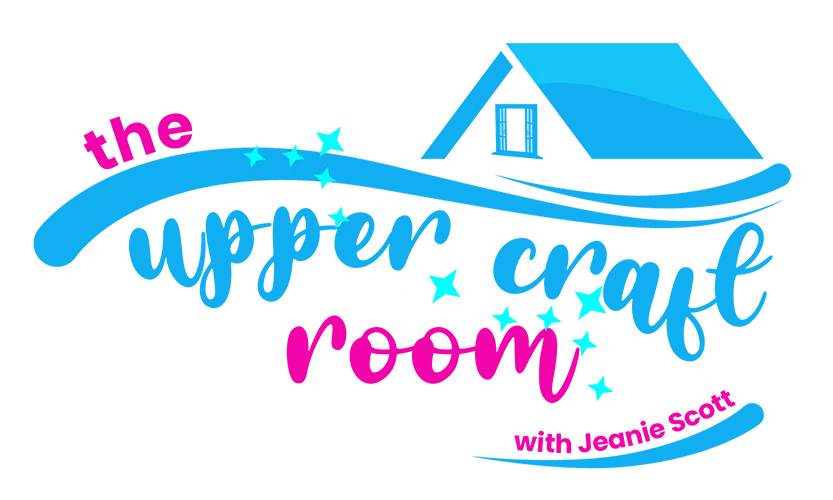
10 Essential Tools Every Craft Space Needs
(That Actually Make Card Making More Fun)
If card making feels harder than it should—or you’ve spent too much money on tools that didn’t get used—this post is for you.
These are the 10 tools I actually use every time I craft. No fluff. Just solid, reliable tools that make card making easier, faster, and a whole lot more enjoyable.
1. Glass Mat or Self-Healing Cutting Mat
A good workspace starts with the right surface. A glass mat is amazing for ink blending, cleaning up messes, and holding your project steady, while a self-healing mat is ideal if you're doing a lot of cutting with craft knives. You definitely don’t need both—just choose the one that fits your space and crafting style best.
Your surface matters—it protects your workspace, makes cleanup easier, and gives you a better foundation for blending, cutting, or gluing.
2. Guillotine Paper Trimmer
If your cuts are crooked or frayed, the rest of the card is going to look off no matter how pretty the design is. A guillotine trimmer gives you crisp, clean edges with one cut—no fuzzy borders or dull blades to deal with. This is one of those tools that instantly makes your cards look more professional.
Clean, straight cuts make your cards look polished. These are my go-to trimmers:
3. Scoreboard + Bone Folder
Scoring helps your cardstock fold cleanly without cracking. If you're tired of wonky folds or cards that don’t sit flat, a scoreboard + bone folder is a simple upgrade that makes a big difference. You don’t have to spend a lot—just get one that suits the size of cards you usually make.
A good scoreboard helps with crisp, professional folds.
4. Cardstock
The base of any card is the cardstock—and quality matters. Thicker cardstock holds up better, especially for card bases, while thinner layering cardstock is great for stamping or die cutting. If you’re going to splurge anywhere, make it on good paper. It’s the foundation of everything you build on top.
Quality cardstock makes a huge difference—especially for layering and stamping.
5. Stamp Positioner
If you’ve ever stamped something perfectly… except it was crooked or not centered, this is for you. A stamp positioner helps you get precise placement and lets you double-stamp in the exact same spot if the first one isn’t dark enough. You only need one—just pick the style you like.
A must for clean, centered stamping—especially for layered images or sentiments.
6. Ink Pads
The right ink pads give you smooth, even color whether you’re stamping, blending, or adding detail. I personally use dye inks like Gina K and Distress because they’re easy to work with and give great results, but you don’t need every color—just start with a few basics and build from there.
These give smooth coverage and consistent results.
7. Blending Brushes
Blending brushes help you create soft backgrounds, ombré effects, and smooth transitions between colors. If you've struggled with harsh lines or patchy blending, switching to the right brushes can fix that fast. You don’t need a huge set—just one per color family is plenty to start.
Great brushes help you avoid harsh edges and give you buttery smooth blends.
8. Die Cutting Machine
A die cutting machine adds depth, shape, and dimension to your cards with minimal effort. Whether you're cutting out shapes, layering frames, or using embossing folders, this tool does the heavy lifting. If you're planning to get into die cutting at all, this is the one tool you’ll reach for constantly.
A die cutting machine is where the real fun begins—great for adding detail and dimension.
9. Layout Dies
Layout dies are pre-measured shapes that save you from having to do any math. They’re perfect for layering, framing sentiments, or creating shaped backgrounds. You don’t need every shape—just choose the ones you’ll use the most based on your favorite card designs.
Layout dies save time and take the guesswork out of layering.
10. Adhesives
Not all glue is created equal. Between flat tape, foam dots for dimension, and liquid glue with wiggle room, you’ll want a mix that suits different card layers. You don’t need everything—just keep your favorite go-tos stocked so you’re never stuck mid-project.
A mix of adhesives gives you flexibility—flat layers, dimension, and wiggle room for adjustments.
Wrap-Up
These are the tools I keep within reach because they help me create cards I'm proud of—without the stress or wasted supplies. If you're just getting started, this list will give you a solid foundation.
📥 Want a printable checklist of everything mentioned? [Download it here](#)
📺 Watch the full video breakdown on YouTube: https://youtu.be/wjxaj-Az9z4
Affiliate Disclaimer: Some links may be affiliate links, which means I earn a small commission—at no extra cost to you. I only share tools I use and trust.




